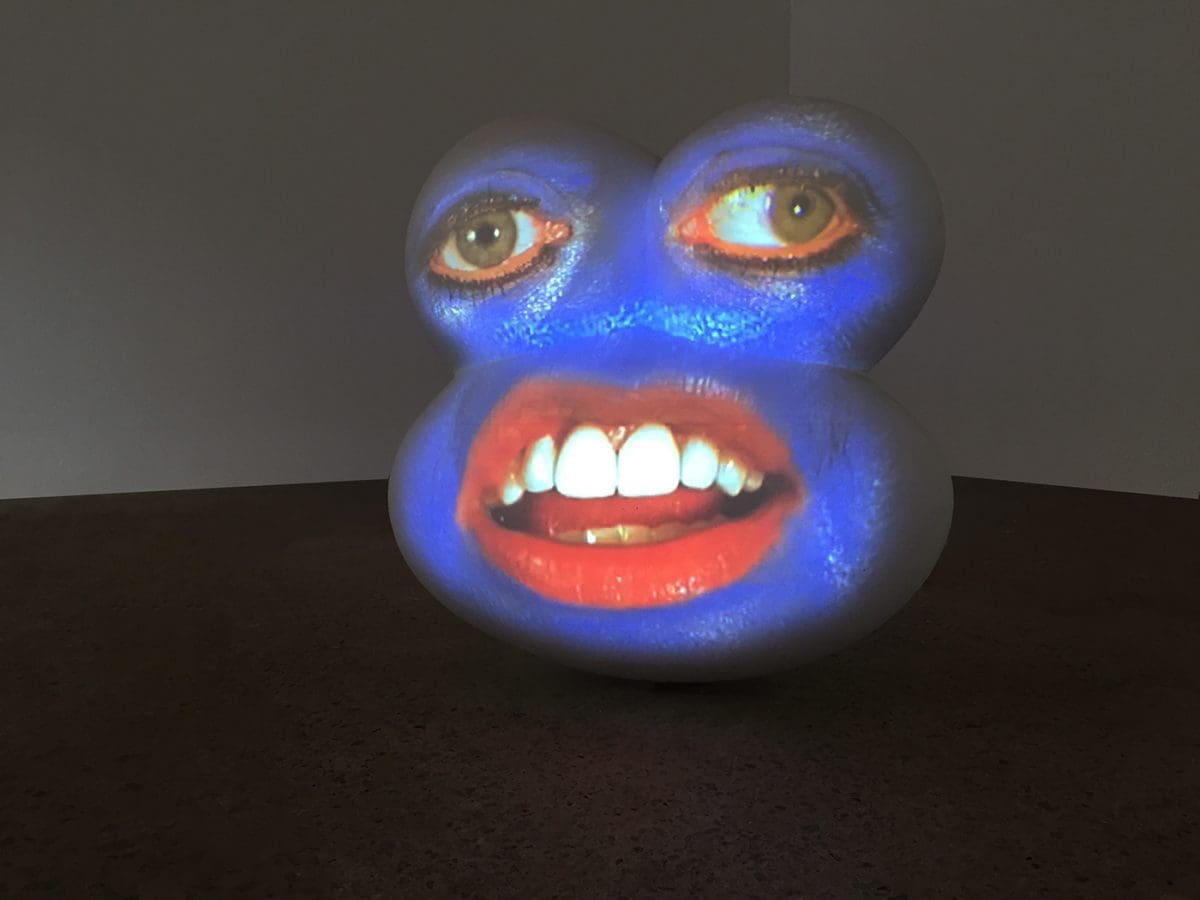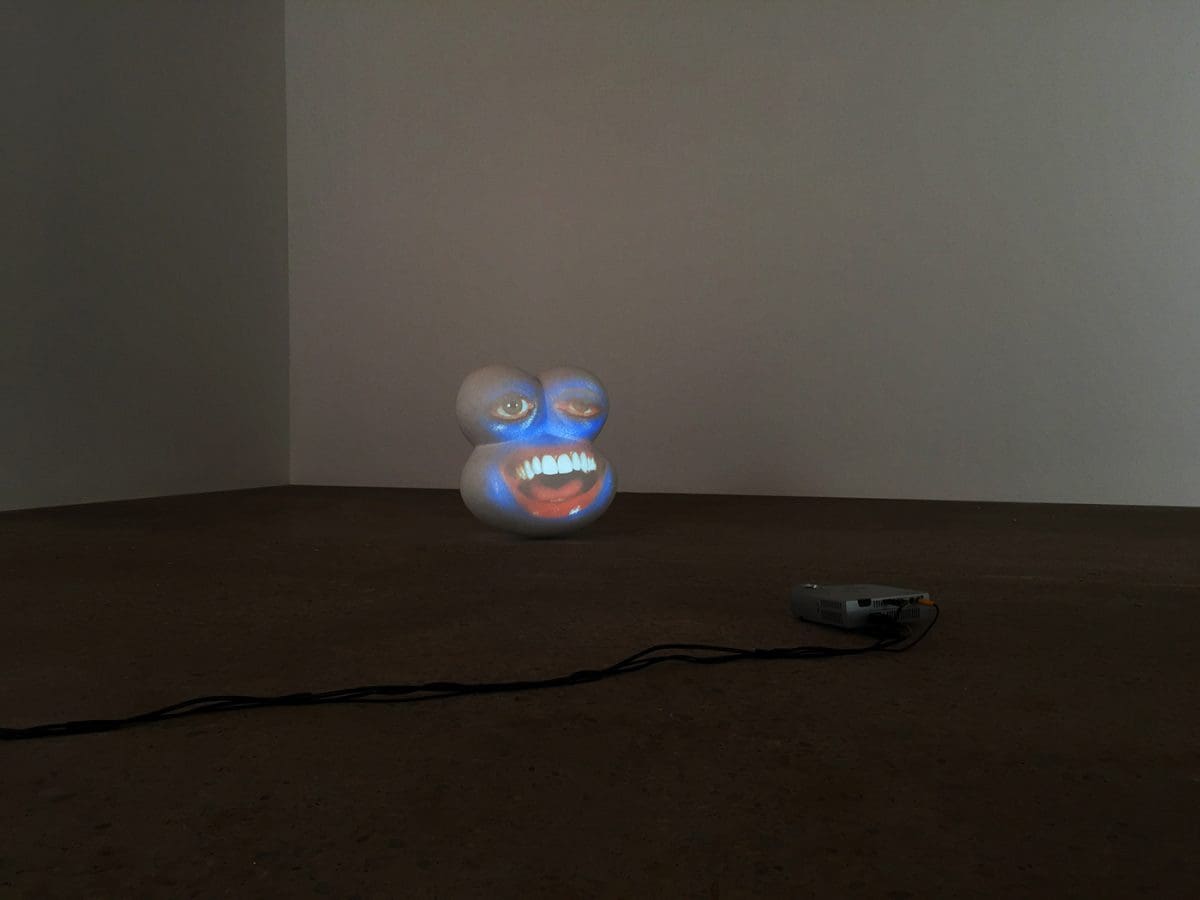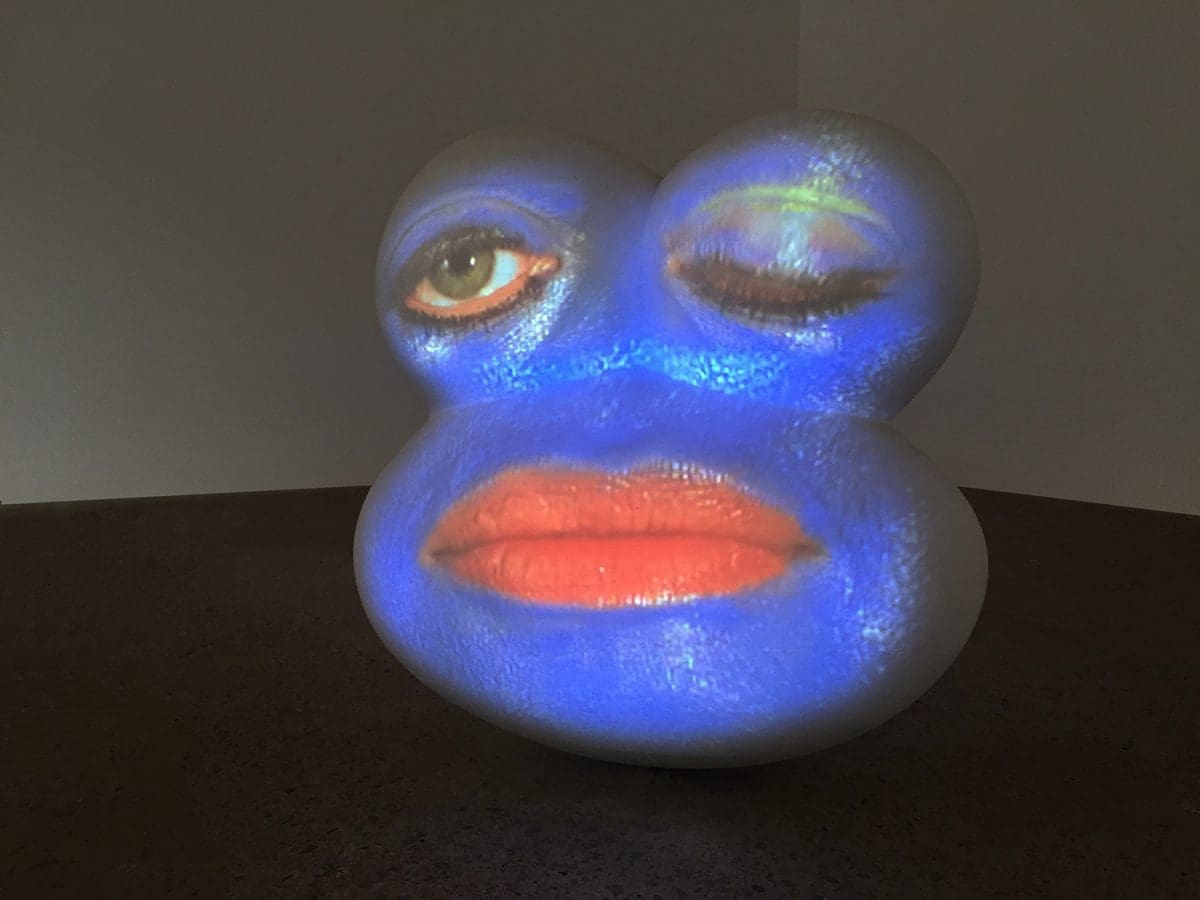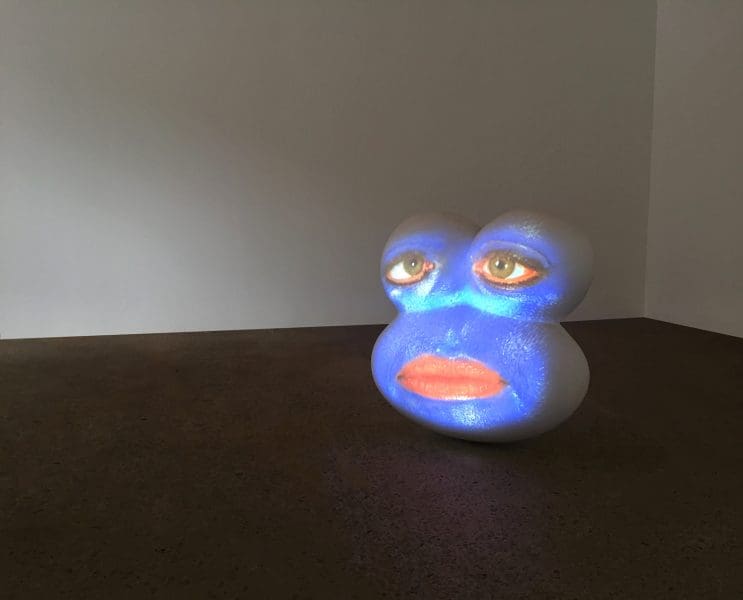
Finding New Spaces Together
‘Vádye Eshgh (The Valley of Love)’ is a collaboration between Second Generation Collective and Abdul-Rahman Abdullah weaving through themes of beauty, diversity and the rebuilding of identity.





“Look at the screen, I’m on my way to make heaven,” gargles the voice of a bodiless cubist head talking on a loop as you enter Fox Jensen Gallery.
But really, the shin-high fibre-glass work titled Blue, 2006, could be blurting out any number of lines as you enter Tony Oursler’s show On/Off. From “I want to control your DNA, O.K.? So be careful” to “I’m going to jump inside you right now, now, now” and “bye, bye, cruel world” the words which spill from the American artist’s dysmorphic bobble-head come to form a slew of stanzas that land a little too close for comfort in 2019.
The show is comprised of just one single work, and it claims ownership over a modest corner of the space, commanding your attention in ways it might not have been able to in the company of others. And with it, emerges a ‘gotcha’ moment which has been curdling in the wings for the last 13 years. In 2019, Blue, 2006, has osmosed reality in ways that very few works of art have been able to. The work shocks its viewer into a paralysis inspired by the darkest of techno-capitalist nightmares, and breathes new life into fatigued Orwellian tropes.
Oursler’s career-long exploration of the relationship which binds humanity and technology might have made for honest enquiry when the work was created, but what does it mean today?

Tracking back to the time it was conceived, Blue grappled with technological analyses which, for the most part, were infantile and misunderstood. Technology was transforming our lives, yet we seldom understood to what degree it could, and continues to do so. Oursler created the work before the United States would see the election of its first black President; at a time rife with conflict in the Middle East, and a rampant war on drugs locally.
But what would follow shortly after, with the rise of techno-capitalism and the conversations which have come to line much of the mainstream media since, would create new contexts for Oursler’s work. The ways the world has evolved as his works have aged, have given new meanings to a catalogue of work which has slowly merged worlds of surreal cubism and reality. Today much of Oursler’s oeuvre no longer merely comments on society’s relationship with technology. Now it serves as a document of it.
It’s at this point that it becomes clear that this show is less about Blue itself, and more about the context and time in which it stands. In 2019, our endless grappling with the ways technology continues to reshape our lives no longer merits the fabled descriptions Oursler’s work has often received. Today, it might be too easy to describe Oursler’s work as spooky, conspiracy-related, or even politically-charged (comments made in the SMH, Frieze and Guardian) because it no longer symbolises a fear of, or resentment for, a relationship we do not understand.
Instead, today, the work along with the space and time at which it is shown, merely reflects the time in which we live. With On/Off, Tony Oursler is merely holding a mirror to the lives we feared might emerge, and by showing them today, he might just be saying “I told you so.”
On/Off
Tony Oursler
Fox Jensen Gallery
25 July – 5 September